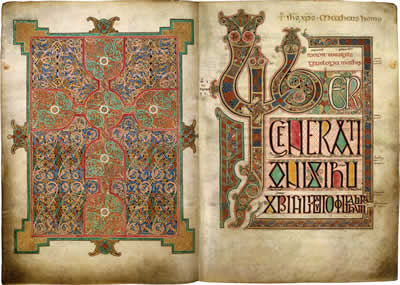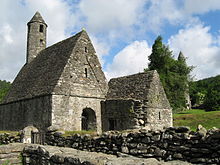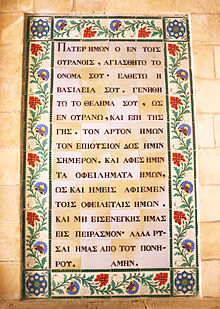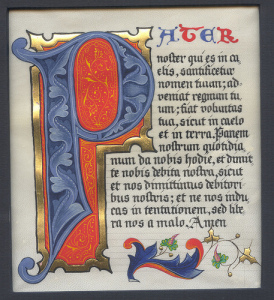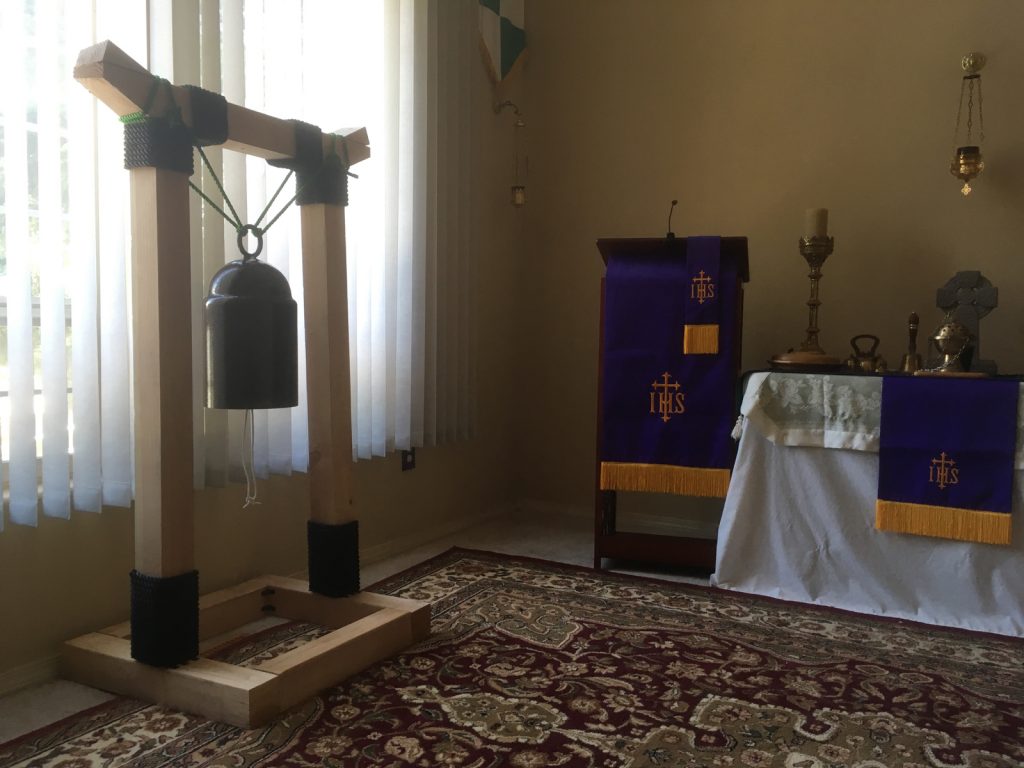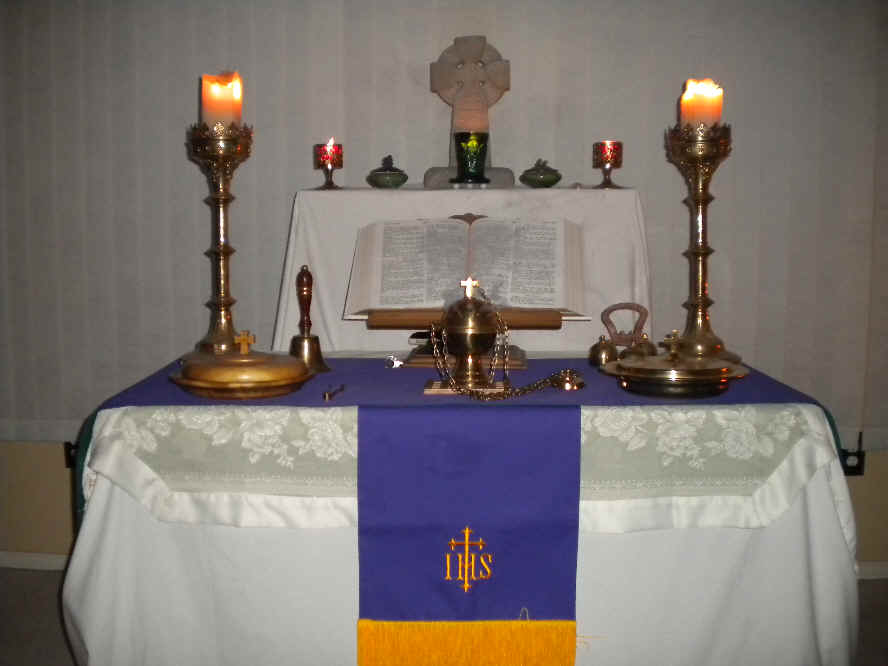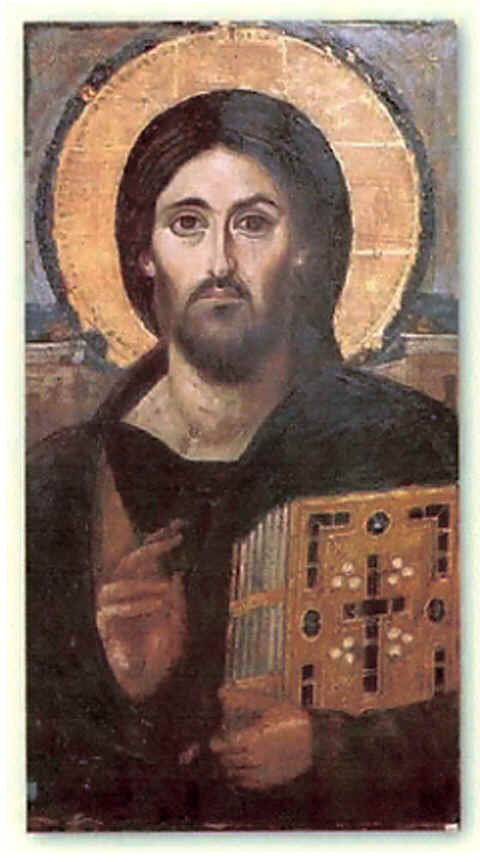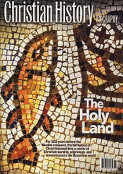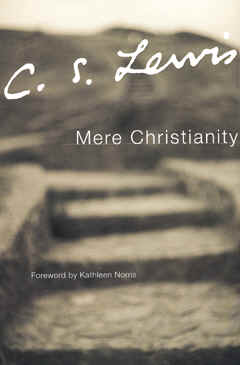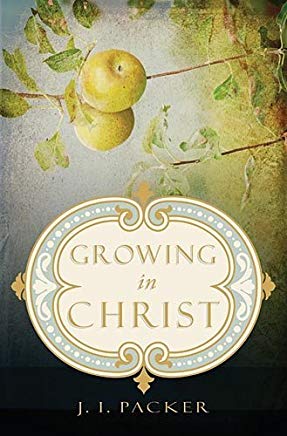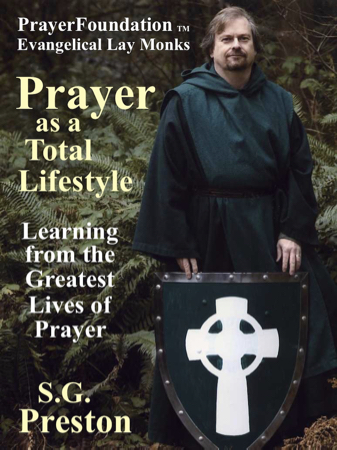“Ma’s math leat sìth, càirdeas, agus cluain—éisd, faic,‘us fuirich sàmhach.” “If you wish peace, friendship, and quietness: listen, look, and be silent.” -Old Gaelic Saying
“My meditation of Him shall be sweet: I will be glad in the LORD.”
-Psalm 104:34

"...LEctiO diVina HAS nO gOAl OtHER tHAn tHAt Of bEing in the pRESENcE Of GOd by pRayiNg the ScRipturES."
Experiencing God’s Presence and His Word Through:
1. Reading 2. Meditation
3. Prayer 4. Contemplation
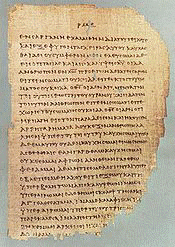

LEctiO diVinA: pRAy-REAd ScRiptuRE — a. the pROcESS of LEctiO diVinA

A very ancient art, practiced at one time by all Christians, is the technique known as lectio divina (divine reading) – a slow, contemplative praying of the Scriptures which enables the Bible, the Word of God, to become a means of union with God.
This ancient practice has been kept alive in Christian monastic tradition.
…time set aside in a special way for lectio divina enables us to discover in our daily life an underlying spiritual rhythm.
Within this rhythm we discover an increasing ability to offer more of ourselves and our relationships to the Father, and to accept the embrace that God is continuously extending to us in the person of His Son, Jesus Christ.
i. LEctiO: REAdiNG / LiStENinG
The art of lectio divina begins with cultivating the ability to listen deeply, to hear “with the ear of our hearts” as St. Benedict encourages us in the Prologue to the Rule.
When we read the Scriptures we should try to imitate the prophet Elijah. We should allow ourselves to become men and women who are able to listen for the still, small voice of God (1 Kings 19:12); the “faint murmuring sound” which is God’s word for us,
God’s voice touching our hearts. This gentle listening is an “atunement” to the presence of God in that special part of God’s creation which is the Scriptures.
The cry of the prophets to ancient Israel was the joy-filled command to “Listen!” “Shema Yisrael: Hear, O Israel!”
In lectio divina we too, heed that command and turn to the Scriptures, knowing that we must “hear” – listen – to the voice of God, which often speaks very softly. In order to hear someone speaking softly we must learn to be silent.
We must learn to love silence. If we are constantly speaking or if we are surrounded with noise, we cannot hear gentle sounds.
The practice of lectio divina, therefore, requires that we first quiet down in order to hear God’s word to us. This is the first step of lectio divina, appropriately called lectio – reading.
____________________
The reading or listening which is the first step in lectio divina is very different from the speed reading which modern Christians apply to newspapers, books, and even to the Bible.
Lectio is reverential listening; listening both in a spirit of silence and of awe. We are listening for the still, small voice of God that will speak to us personally – not loudly, but intimately.
In lectio we read slowly, attentively, gently listening to hear a word or phrase that is God’s word for us this day.
ii. MEditAtiO: MEditAtiON
Once we have found a word or a passage in the Scriptures which speaks to us in a personal way, we must take it in and “ruminate” on it.
The image of the ruminant animal quietly chewing its cud was used in antiquity as a symbol of the Christian pondering the word of God.
For us today these images are a reminder that we must take in the word – that is, memorize it – and while gently repeating it to ourselves, allow it to interact with our thoughts, our hopes, our memories, our desires.
____________________
This is the second step or stage of lectio divina – meditatio.
Through meditatio we allow God’s word to become His word for us, a word that touches us and affects us at our deepest levels.
iii. ORAtiO: pRayER
The third step in lectio divina is oratio – prayer:
Prayer understood both as dialogue with God, that is, as loving conversation with the One who has invited us into His embrace; and as consecration, prayer as the priestly offering to God of parts of ourselves that we have not previously believed God wants.
In this consecration-prayer we allow the word that we have taken in and on which we are pondering to touch and change our deepest selves.
…God invites us in lectio divina to hold up most difficult and pain-filled experiences to Him, and to gently recite over them the healing word or phrase He has given us in our lectio and meditatio.
In this ratio, this consecration-prayer, we allow our real selves to be touched and changed by the word of God.
iv. CONtEMplAtiO: CONtEMpLatiON
Finally, we simply rest in the presence of the One who has used His word as a means of inviting us to accept His transforming embrace.
No one who has ever been in love needs to be reminded that there are moments in loving relationships when words are unnecessary.
It is the same in our relationship with God. Wordless quiet rest in the presence of the one who loves us has a name in the Christian tradition:
contemplatio – contemplation.
Once again we practice silence, letting go of our own words; this time simply enjoying the experience of being in the presence of God.
LEctiO diVinA: pRAy-REAd ScRiptuRE -- b. the uNdERlyiNg RHytHM Of LEctiO DiVinA
If we are to practice lectio divina effectively, we must travel back in time to an understanding that today is in danger of being almost completely lost.
In the Christian past the words action (or practice, from the Greek praktikos, or praxis) and contemplation did not describe different kinds of Christians engaging (or not engaging) in different forms of prayer and apostolates (ministries).
Practice and contemplation were understood as the two poles of our underlying, ongoing spiritual rhythm: a gentle oscillation back and forth between spiritual “activity” with regard to God and “receptivity.”
Practice – spiritual “activity” – referred in ancient times to our active cooperation with God’s grace in rooting out vices and allowing the virtues to flourish.
The direction of spiritual activity was not outward in the sense of an apostolate, but inward – down into the depths of the soul where the Spirit of God is constantly transforming us, refashioning us in God’s image.
The active life, is thus coming to see who we truly are and allowing ourselves to be remade into what God intends us to become.
____________________
“At intervals the Lord invites us to cease from speaking so that we can simply rest in his embrace.”
In the early monastic tradition contemplation was understood in two ways.
First was theoria physike, the contemplation of God in creation – God in “the many.”
Second was theologia, the contemplation of God in Himself without images or words – God as “The One.”
____________________
In contemplation we cease from interior spiritual doing and learn simply to be, that is, to rest in the presence of our loving Father.
Just as we constantly move back and forth in our exterior lives between speaking and listening, between questioning and reflecting, so in our spiritual lives we must learn to enjoy the refreshment of simply being in God’s presence, an experience that naturally alternates (if we let it!) with our spiritual practice.
In ancient times contemplation was not regarded as a goal to be achieved through some method of prayer, but was simply accepted with gratitude as God’s recurring gift.
At intervals the Lord invites us to cease from speaking so that we can simply rest in His embrace. This is the pole of our inner spiritual rhythm called contemplation.
____________________
How different this ancient understanding is from our modern approach!
Instead of recognizing that we all gently oscillate back and forth between spiritual activity and receptivity, between practice and contemplation, we today tend to set contemplation before ourselves as a goal – something we imagine we can achieve through some spiritual technique.
The amount of time we spend in any aspect of lectio divina, whether it be rumination, consecration, or contemplation depends on God’s Spirit, not on us.
Lectio divina teaches us to savor and delight in all the different flavors of God’s presence, whether they be active or receptive modes of experiencing Him.
____________________
In lectio divina we offer ourselves to God; and we are people in motion.
In ancient times this inner spiritual motion was described as a helix – an ascending spiral.
Viewed in only two dimensions it appears as a circular motion back and forth; seen with the added dimension of time it becomes a helix, an ascending spiral by means of which we are drawn ever closer to God.
The whole of our spiritual lives was viewed in this way, as a gentle oscillation between spiritual activity and receptivity by means of which God unites us ever closer to Himself.
In just the same way the steps or stages of lectio divina represent an oscillation back and forth between these spiritual poles.
In lectio divina we recognize our underlying spiritual rhythm and discover many different ways of experiencing God’s presence – many different ways of praying.
LEctiO diVinA: pRAy-REAd ScRiptuRE -- c. the pRActicE Of LEctiO diVinA
Choose a text of the Scriptures that you wish to pray.
Many Christians use in their daily lectio divina one of the readings from the…liturgy of the day; others prefer to slowly work through a particular book of the Bible.
It makes no difference which text is chosen, as long as one has no set goal of “covering” a certain amount of text: the amount of text “covered” is in God’s hand, not yours.
Place yourself in a comfortable position and allow yourself to become silent. …use whatever method is best for you, and allow yourself to enjoy silence for a few moments.
_____________________
Then turn to the text and read it slowly, gently. Savor each portion of the reading, constantly listening for the “still, small voice” of a word or phrase that somehow says, “I am for you today.”
Do not expect lightning or ecstasies. In lectio divina God is teaching us to listen to Him, to seek Him in silence. He does not reach out and grab us; rather He softly, gently invites us ever more deeply into His presence.
Next take the word or phrase into yourself. Memorize it and slowly repeat it to yourself, allowing it to interact with your inner world of concerns, memories, and ideas.
Do not be afraid of “distractions.” Memories or thoughts are simply parts of yourself which, when they rise up during lectio divina, are asking to be given to God along with the rest of your inner self.
Allow this inner pondering, this rumination, to invite you into dialogue with God.
____________________
Then, speak to God.
Interact with God as you would with one who you know loves and accepts you. And give to Him what you have discovered in yourself during your experience of meditatio.
Experience yourself as the priest that you are.
Experience God using the word or phrase that He has given you as a means of blessing, of transforming the ideas and memories, which your pondering on His word has awakened.
Give to God what you have found within your heart.
____________________
Finally, simply rest in God’s embrace.
And when he invites you to return to your pondering of His word or to your inner dialogue with Him, do so. Learn to use words when words are helpful, and to let go of words when they no longer are necessary.
Rejoice in the knowledge that God is with you in both words and silence, in spiritual activity and inner receptivity.
___________________
Sometimes in lectio divina one will return several times to the printed text, either to savor the literary context of the word or phrase that God has given, or to seek a new word or phrase to ponder.
At other times only a single word or phrase will fill the whole time set aside for lectio divina. It is not necessary to anxiously assess the quality of one’s lectio divina as if one were “performing” or seeking some goal.
We must be willing to sacrifice our “goal-oriented” approach if we are to practice lectio divina, because lectio divina has no other goal than spending time with God through the medium of His word.
…In lectio divina we discover that there is solace in our hearts, no interior corner or closet that cannot be opened and offered to God.
God teaches us in lectio divina what it means to be members of His royal priesthood – a people called to consecrate all of our memories, our hopes and our dreams to Christ. ________________________________________________________
Credits: This Article was written by Fr. Luke Dysinger, O.S.B. (Order of St. Benedict). By his wishes, it may be downloaded, reproduced and distributed without special permission from the Author. It was first published in the Spring, 1990 (Vol.1, No.1) edition of Valyermo Benedictine.
(Note: We have edited this article for length.)
Priesthood of All Believers
Officiant: For you, O Christ, were slain, and have redeemed us to God; from every tribe, and language, and people, and nation. (Revelation 5:9)
And have made us unto our God a chosen people, a royal priesthood, a holy nation, God’s own special possession.
All: Who once were not a people, but are now the people of God. Who had not received mercy, but now have received mercy. (1 Peter 2:9-10)
J.i. pAcKER writiNg AbOut pRayER & KnOwiNg GOd:



“What makes life worthwhile is having a big enough objective,
something which catches our imagination and lays hold of our allegiance,
and this the Christian has in a way that no other person has.
For what higher, more exalted, and more compelling goal can there be than to know God?”
“Whatever else in the Bible catches your eye, do not let it distract you from Him.”
“Wait on the Lord” is a constant refrain in the Psalms, and it is a necessary word, for God often keeps us waiting.
He is not in such a hurry as we are, and it is not his way to give more light on the future than we need for action in the present,
or to guide us more than one step at a time.
When in doubt, do nothing, but continue to wait on God. When action is needed, light will come.”
“There is tremendous relief in knowing His love to me is utterly realistic, based at every point on prior knowledge of the worst about me, so that no discovery can disillusion Him about me,
in the way I am so often disillusioned about myself, and quench His determination to bless me.”
“Once you become aware that the main business that you are here for is to know God, most of life’s problems fall into place of their own accord.”
“The Life of true holiness is rooted in the soil of awed adoration.”
-J.I. Packer (1926-2020) Evangelical Anglican Theologian Author: “Growing in Christ,”
and “Knowing God”

This Website: PrayerFoundation Evangelical Lay Monks ™ Built by: S.G. Preston Ministries ™
Copyright © 1999-2024 S.G. Preston. All Rights Reserved.
Photos & Text Copyright © 1999-2024 S.G. Preston. All Rights Reserved.


